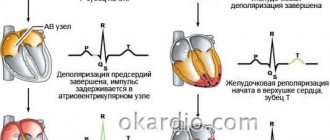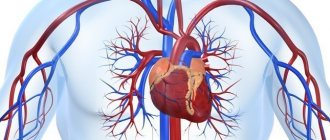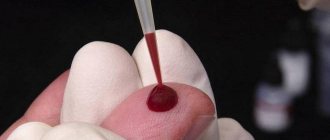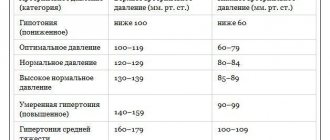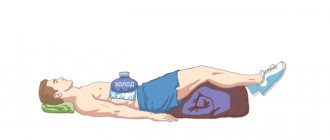Pediatric otorhinolaryngology is based on age and is quite diverse. At an early age, diseases occur that are not typical for adults, and vice versa. But there are pathological disorders that are characteristic of different age groups - these are acute conditions. The article will discuss only some of them, namely those that parents often encounter. The purpose of the article is to provide assistance at the pre-medical stage.
Bleeding from the nose in a child or epistaxis is the leakage of blood from the vascular structures of the mucous membrane. In 4% of cases, the quality of life deteriorates. More than half of the population experiences at least one episode of epistaxis. In 20% of children, nosebleeds (NB) of a recurrent type are recorded, and there are signs of chronic blood loss.
Causes that can cause nosebleeds
A child’s nose may bleed for several reasons (local, systemic or external):
- mechanical damage, injuries;
- presence of neoplasms;
- thinning of the mucosa (atrophic rhinitis);
- sinusitis and other infectious diseases;
- fragility of blood vessels;
- blood clotting disorder;
- increased blood pressure (stress, sunstroke, etc.);
- sudden changes in external pressure (on an airplane, in the mountains, etc.)
- vitamin deficiency (lack of vitamins C, K);
- low humidity and high room temperature.
As a rule, single nasal blood loss is not a symptom of serious pathologies, but rather the result of trauma to the nose. However, if the child’s blood loss is repeated many times, is difficult to eliminate and is not associated with injury, parents should urgently seek qualified help from a medical institution.
Possible complications
If a child has bleeding from the nose, then ignoring this condition is unacceptable, because it is fraught with the development of the following complications:
- Hemorrhagic shock (hypovolemia). It develops when there is a small volume of circulating blood in the body. This is accompanied by the development of chronic hypoxia. Oxygen starvation leads to functional failure of systems and organs, and is also fraught with the development of irreversible changes.
- Degenerative changes in the mucosa. Drying of the mucous membrane leads to its thinning.
- Anemia. Frequent NK lead to blood loss, which is accompanied by frequent infectious diseases, lethargy and a decrease in the body's protective functions.
It is impossible to visually assess the level of blood loss in the posterior type of nosebleed. That is why you should consult a doctor for a comprehensive diagnosis to eliminate the possibility of complications.
What types of bleeding are there?
Note that blood can come from the nose in drops, or maybe in a continuous stream. It is this sign that indicates the location of the vessels and the degree of danger. The vessels involved in blood loss can be located both in the anterior and posterior regions of the nasal cavity. In this regard, nosebleeds are divided into two types:
- Front. It occurs due to a violation of the integrity of small blood vessels located in the nasal septum and does not pose a serious danger to the child’s health. It is quite possible to stop it on your own.
- Rear. It assumes the most intense blood loss, which is caused by disruption of large vessels in the posterior parts of the nose, and this is why it is dangerous. The blood does not flow out of the nose, but flows down the throat. In this case, pinching your nose is useless; medical help is required.
Massive blood loss can be indicated by general weakness and pallor of the skin, low blood pressure and disorientation.
Thus, with severe bleeding, damage to large vessels can be assumed. Such bleeding cannot be stopped on its own; urgent medical attention is required.
Symptoms
Epistaxis develops against the background of general well-being. Possible previous symptoms include itching in the sinuses, headaches or dizziness. Blood flows into the nasopharynx along the back wall of the larynx or flows out.
Associated symptoms with blood loss:
- flashing “flies” before the eyes;
- dizziness;
- pale skin;
- ringing and noise in the ears;
- general malaise;
- strong thirst;
- cardiopalmus.
Next, there is a decrease in blood pressure (BP). Characteristic shortness of breath appears, consciousness is impaired and fainting is possible. Vomiting blood also indicates the presence of a posterior type of nosebleed (when blood flows into the throat and is then swallowed).
Diagnosis and methods of treating pathology
In the process of examining the child and interviewing the parent, the doctor needs to obtain as much information as possible about the causes of frequent blood loss. In this regard, he is interested in answers to the following questions:
- What was the obvious cause of the bleeding: injury, illness, or blowing your nose?
- How often do blood losses occur and how were they stopped?
- What medications is the patient taking? Do they include drugs that prevent blood clotting?
- What diseases does the child (parents, relatives) suffer from?
The doctor examines the child's skin for bruises and small capillaries, confirming the fragility of the blood vessels. Additionally, the child may be prescribed the following examinations:
- general blood and urine tests;
- coagulogram;
- electrocardiography;
- X-ray of the sinuses;
- computed tomography (CT).
The doctor's first task is to stop blood loss. To do this, a specialist can use conservative methods, such as:
- anterior (posterior) tamponade;
- taking hemostatic drugs.
If this method is ineffective, surgical procedures are used that involve cauterization of bleeding vessels:
- using electric current (electrocoagulation);
- liquid nitrogen (cryocoagulation);
- high frequency radio waves;
- a narrow laser beam.
After the bleeding stops, the causes are identified and work is done to eliminate them. If there are pathologies in the form of a deviated nasal septum, surgery to correct it is indicated. If there is an obvious infectious component, antibacterial therapy, etc. is prescribed.
Diagnostics
To find out why a child has nosebleeds, a comprehensive examination is prescribed:
- coagulogram;
- visual examination of the nasal cavity;
- hemostasis study;
- detailed blood test;
- checking capillaries for mechanical stability;
- collecting anamnesis to determine the cause of NK.
Differential diagnosis is required. The doctor determines the bleeding area: lungs, stomach or nasal cavity (symptoms are similar). In the first case, the blood is scarlet, in the second it is foamy, in the third it is brown and does not flow down the back wall of the throat.
How to stop bleeding: recommendations for parents
To begin with, the child should not lie down or tilt his head back, as blood may enter the lower respiratory tract or cause vomiting. Also, you should not put any tampons in your nose.
- The child needs to be seated and his head slightly tilted down, gently pinch the nostril for 3-5 minutes so that a blood clot forms and closes the injured vessel.
- If the blood continues to flow, repeat the procedure again.
- If possible, you can apply an ice pack or a handkerchief moistened with cold water to the bridge of the nose.
We draw the attention of parents: if the bleeding does not stop within 15-20 minutes, it is necessary to call an ambulance.
Treatment
To provide first aid to a child, you need to determine the area of damage. If the anterior vascular sections are affected, then nosebleeds will be more intense. In this case, the bleeding stops after the first medical procedures or on its own.
If nosebleeds in children are severe, then we are talking about damage to large vascular structures that are located in the posterior sections. This condition requires medical attention, because does not regress on its own.
How to stop nosebleeds - recommendations for parents:
1. Place the child’s body in an optimal position (sitting with the head tilted forward).
2. Behave calmly so as not to cause fear with your behavior; calm the child down.
3. Place cold on the bridge of your nose (a towel moistened with water, ice).
4. Place vasoconstrictor drops into your nose.
5. If the above measures do not help, then you can moisten a cotton swab with a 3% hydrogen peroxide solution and insert it into the nostril, pressing it to the nasal septum as high as possible.
6. If the manipulation does not produce results within 15-20 minutes, call an ambulance.
What to do is not recommended! Do not place the child on his back or tilt his head back. This measure causes blood to flow into the throat and stomach, which soon causes vomiting. If you are unable to stop the bleeding on your own, you must call an ambulance. If NK occurs frequently, it is recommended to visit an otolaryngologist.
If a child develops nosebleeds, contact the ENT department at the RebenOK clinic. You can also use the online consultation service.
It is necessary to consult a doctor to find out why your child is bleeding from the nose. If tamponade is not effective, then surgical treatment using endoscopic electrocoagulation is prescribed. To avoid repeated bleeding, the affected blood vessels in the nasal mucosa are “closed.” Local anesthesia is performed using electricity. This procedure can also be performed using medications.
Preventive actions
Following simple recommendations by parents will help eliminate unpleasant moments associated with blood loss:
- Trim your child’s fingernails regularly to prevent injury to his nose;
- moisturize the nasal mucosa using saline solutions or special ointments;
- maintain optimal humidity in the room, use a humidifier;
- treat colds in a timely manner; do not blow your nose too often or too much during treatment;
- do not overuse vasoconstrictor drugs to prevent thinning of the mucosa.
We remind Kaliningrad residents that you can make an appointment with an otolaryngologist by making a preliminary application by filling out an online form, or by calling one of our clinics at the phone numbers listed on the website.
Prevention
Parents are able to prevent the development of epistaxis. Preventive measures for nosebleeds in children include adequate nasal hygiene, organization of a favorable indoor microclimate and timely treatment of hemostasis disorders.
For treatment of nosebleeds, contact the RebenOK clinic. Patients are treated by certified ENT doctors with extensive practical experience. The clinic is equipped with expert class equipment. The instruments and technical means used are designed for pediatric patients.
Main function of the nose
The main function of this organ is respiratory, but aesthetic and communication functions will also be important. Scientific studies have been conducted that have revealed that people recognize each other by the shape and size of the nose, as well as by its proportions relative to other parts of the face. Thus, it is one of the most important signs of objective individuality.
Different races have their own characteristics of the structure of the external nose:
- Slavic - a relatively small bone part and a more developed cartilaginous section;
- Greek or Roman - distinguished by a long, narrow pyramid of the nose, often with a hump and a relatively small cartilaginous section;
- Caucasian - large bone and cartilaginous part, often with a hump;
- negroid - characterized by a small bony part and a large, usually flattened tip with wide wings;
- Asian - distinguished by proportionally small bone and cartilaginous parts, often with a flattened back and tip.
One of the features of our olfactory organ is that it grows throughout our lives, changing with age. This is especially true for the nasolabial angle. In children, the nasolabial angle is usually obtuse, about 105 degrees; in adults, it approaches a rectangular angle; in older people, the tip often drops and the angle becomes acute.
Anatomy of the external nose
The external nose has a complex anatomy, being an organ with a cartilaginous and bony skeleton, covered with thick skin. It consists of the following sections: the root (the area between the brow ridges), tapering downwards and turning into the pyramid - part of the bony skeleton of the nose, represented by the nasal bones and the frontal processes of the upper jaw.
In the pyramid, there is a back - a face facing outwards, and slopes - the side surfaces of the pyramid. The tip of the nose is the most protruding part, represented by a cartilaginous skeleton. The tip consists of several cartilages: large and small alar cartilages, lateral cartilages (also called triangular) and quadrangular septal cartilage. All these cartilages are paired, with the exception of the quadrangular one. The cartilaginous section also includes: the wings of the nose, which form the respiratory openings, the nostrils and the collumella - the fold of skin between the nostrils.
The wings of the nose are covered from the inside with skin overgrown with dense bristly hairs; they form the vestibule of the nasal cavity, which passes into the cavity itself. The skin of the tip is very tightly fused with the underlying cartilage; in the bony part, the skin lies on loose subcutaneous tissue and is easily displaced. Between the skin and cartilage there are facial muscles, thanks to which we can wrinkle our nose, flare our wings, raise and lower the tip, which serves as a demonstration of emotions. The blood supply to the nose is very good. It comes from the system of external and internal carotid arteries. Venous outflow goes both to the internal jugular vein system and to the cranial cavity. Innervation is carried out by the branches of the trigeminal nerve.
How to make an appointment with a pediatrician
You can undergo an examination and receive the necessary recommendations at JSC “Medicine” (academician Roitberg’s clinic), which is located in the central district of Moscow near the Mayakovskaya metro station. Experienced pediatricians will determine the causes of nosebleeds in children and, if necessary, prescribe appropriate treatment.
Our clinic is located in the center of Moscow at 2nd Tverskoy-Yamskaya lane, building 10 (Mayakovskaya station). You can make an appointment with specialists by calling the help desk +7 (495) 995-00-33 (24 hours a day) or on the website using a special form.
What should parents do?
Nosebleeds in children are an unpleasant occurrence that are often harmless, but sometimes pose a serious health threat. To find out the causes of the symptom and get rid of it, it is better to contact experienced pediatric doctors who work at JSC “Medicine” (clinic of Academician Roitberg).
